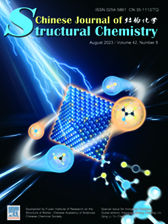
Tandem electrocatalytic nitrate reduction reaction
Chuanfei Cang, Haoquan Zheng* Submit a Manuscript
Guest editors: Haoquan Zheng*, Haiping Lin*, Qing Li*, Yu Chen*
August 15, 2023
ABSTRACT
Exploring and developing renewable energy conversion devices has become one of the efficient solutions for energy crises and environmental problems. Electro- and photo-catalysis is recognized as a practical process for chemical energy conversion, which has attracted considerable research efforts in the design and development of high-performing electrocatalysts in recent decades. The development of new methods to prepare inorganic heterogeneous materials has extended the limits of functional material synthesis for the diverse fields of electro- and photo-catalysis. This special issue will review and present the latest developments in inorganic heterogeneous catalysts for electro- and photo-catalysis. We believe that this special issue will contribute to the rational design and synthesis of inorganic heterogeneous catalysts, the applications in various reactions, and the in-depth understanding of the relationship between structure and activity.
This special issue contains 8 papers, in which 3 perspectives, 2 short communications and 3 articles are included. We thank a lot for the authors’ great contribution to this special issue. A brief summary of all 8 accepted papers is provided as follows:
In perspective “Electrocatalytic reduction of CO2 on chiral Cu surfaces”, a remarkable advancement in research focuses on the electro-conversion of CO2 to synthesize amino acids using a Cu electrocatalyst with a chiral surface. This breakthrough is realized through the utilization of chiral Cu films, enabling the electro-synthesis of amino acids by using CO2 as a carbon source and NH3 as a nitrogen source. This research reveals the chiral surface and chiral induced spin selectivity in chiral inorganic materials could promote the catalytic performance, which is an important idea for developing new electrocatalysts in the future.
In perspective “Construction of metal chalcogenolate cluster linked organic frameworks”, the recent progresses about metal chalcogenolate cluster linked organic frameworks composed of metal and chalcogen ligands are summarized. The synthesis of such frameworks has been achieved by using novel methodologies, such as stepwise assembly, allowing for the creation of intricate structures with different functionalities. New avenues for fabricating metal chalcogenolate cluster linked organic frameworks are unveiled, which promote their applications in electro- and photo-catalysis.
In perspective “Tandem electrocatalytic nitrate reduction reaction”, the recent progresses in studies of electrocatalysts for tandem electrocatalytic nitrate reduction reaction are summarized, mainly covering tandem electrocatalytic mechanism demonstrated by in situ/operando characterizations and pulsed potential electrocatalysis. The potential challenges and the suggestions on further development of catalysts for tandem electrocatalytic nitrate reduction reaction are proposed, which provide potential strategies for the rational design of tandem electrocatalysts.
In short communication “Defect-rich bismuth metallene for efficient CO2 electroconversion”, Bi metallene is synthesized by an ultrasound-assisted Galvani replacement reaction. Bi metallene shows high activity and selectivity for the CO2 reduction reaction. The presence of an atomic vacancy can induce changes in the electronic structure of neighboring atoms and alter the adsorption behavior of reaction intermediates. This phenomenon plays a crucial role in determining the catalytic activity.
In short communication “Defective structures and oxidation resistance of Janus AsP from first-principles prediction”, the defective structure and the oxidation properties of a Janus arsenic phosphide (AsP) are systematically investigated by density functional theory (DFT) calculations. Through a comprehensive analysis encompassing the formation energy, O2 dissociation process, and barriers of defective structures, the Janus AsP structure shows superior oxidation resistance in the presence of surface defects. This characteristic makes it a promising candidate for application in electronic and optical devices.
In article “Self-supporting trimetallic PtAuBi aerogels as electrocatalyst for ethanol oxidation reaction”, an ultrathin trimetallic PtAuBi aerogel is created in this study. This PtAuBi aerogel has a 3D porous network structure that is composed of branching, rough-surfaced 1D nanowires. PtAuBi aerogel shows high performance for direct ethanol fuel cells due to the synergistic effect of 3D porous network structure, downward shift of the Pt d-band center, and dual active sites.
In article “Hydrophilic MnO2 nanowires coating with o-fluoroaniline for electrocatalytic water oxidation”, a MnO2 nanowire coated by a hydrophilic polymer is synthesized to control the hydrophilicity and conductivity of the material. The improved mass transfer efficiency and conductivity are beneficial for electrocatalytic water oxidation. This study presents a novel concept in surface engineering, offering a valuable approach for the preparation of highly efficient electrocatalysts.
In article “Controlled synthesis of MnxCd1−xS for enhanced visible-light driven photocatalytic hydrogen evolution”, a series of MnxCd1−xS samples with different Mn/Cd molar ratios are synthesized for photocatalytic hydrogen production under visible light. The excellent photocatalytic H2 production performance of the Mn0.4Cd0.6S solid solution is mainly due to its enhanced reducing potential and high charge separation efficiency.





